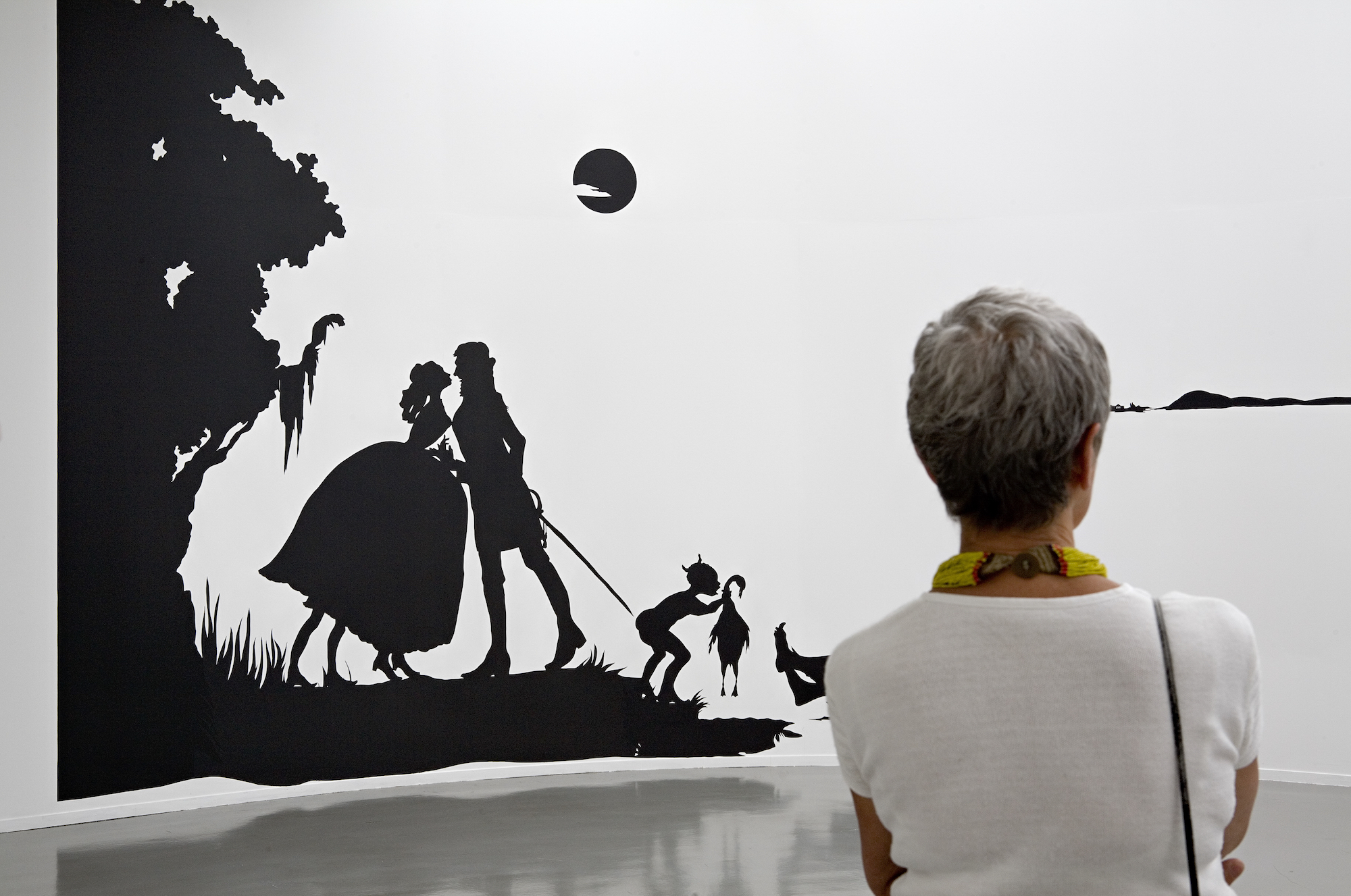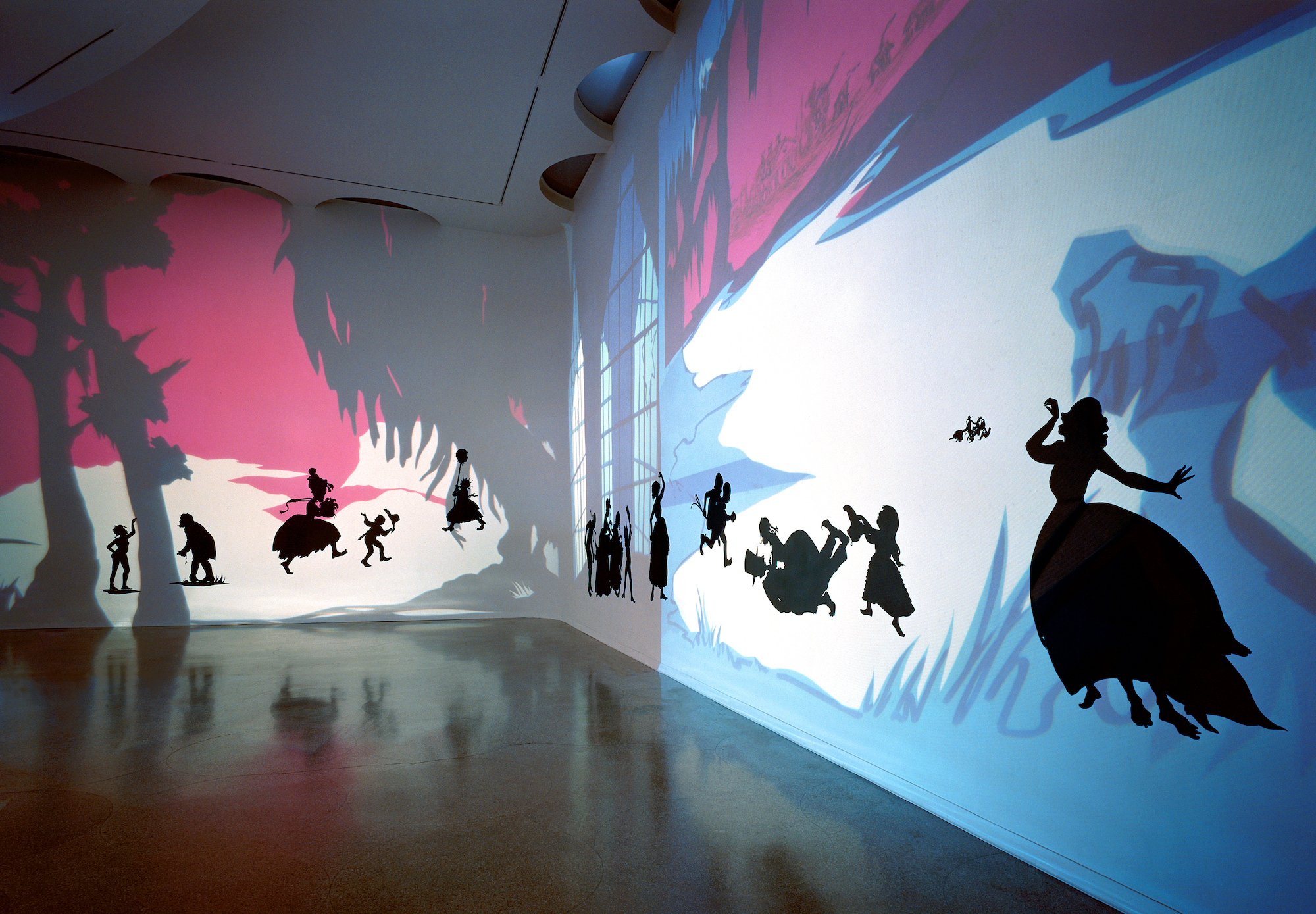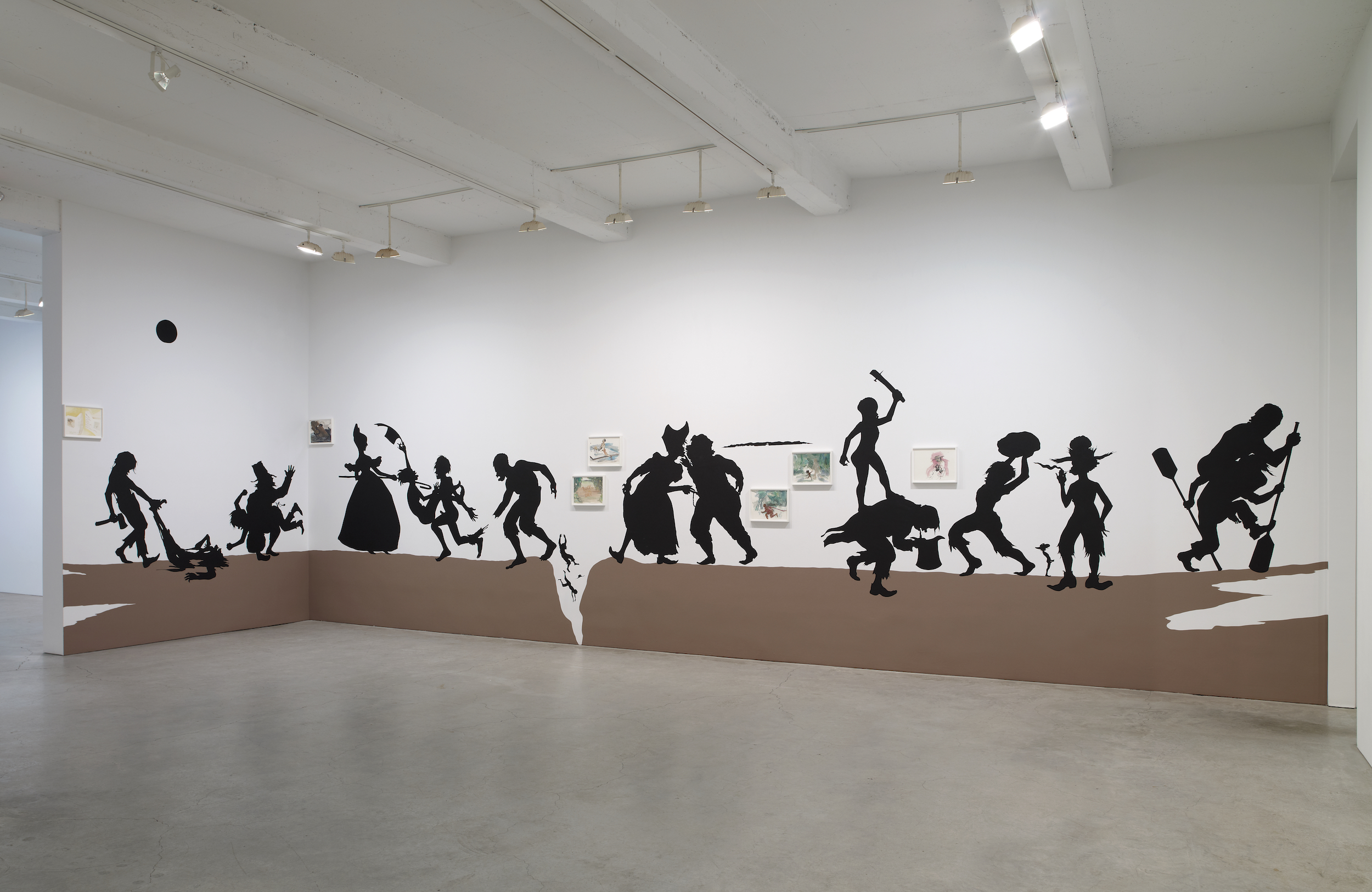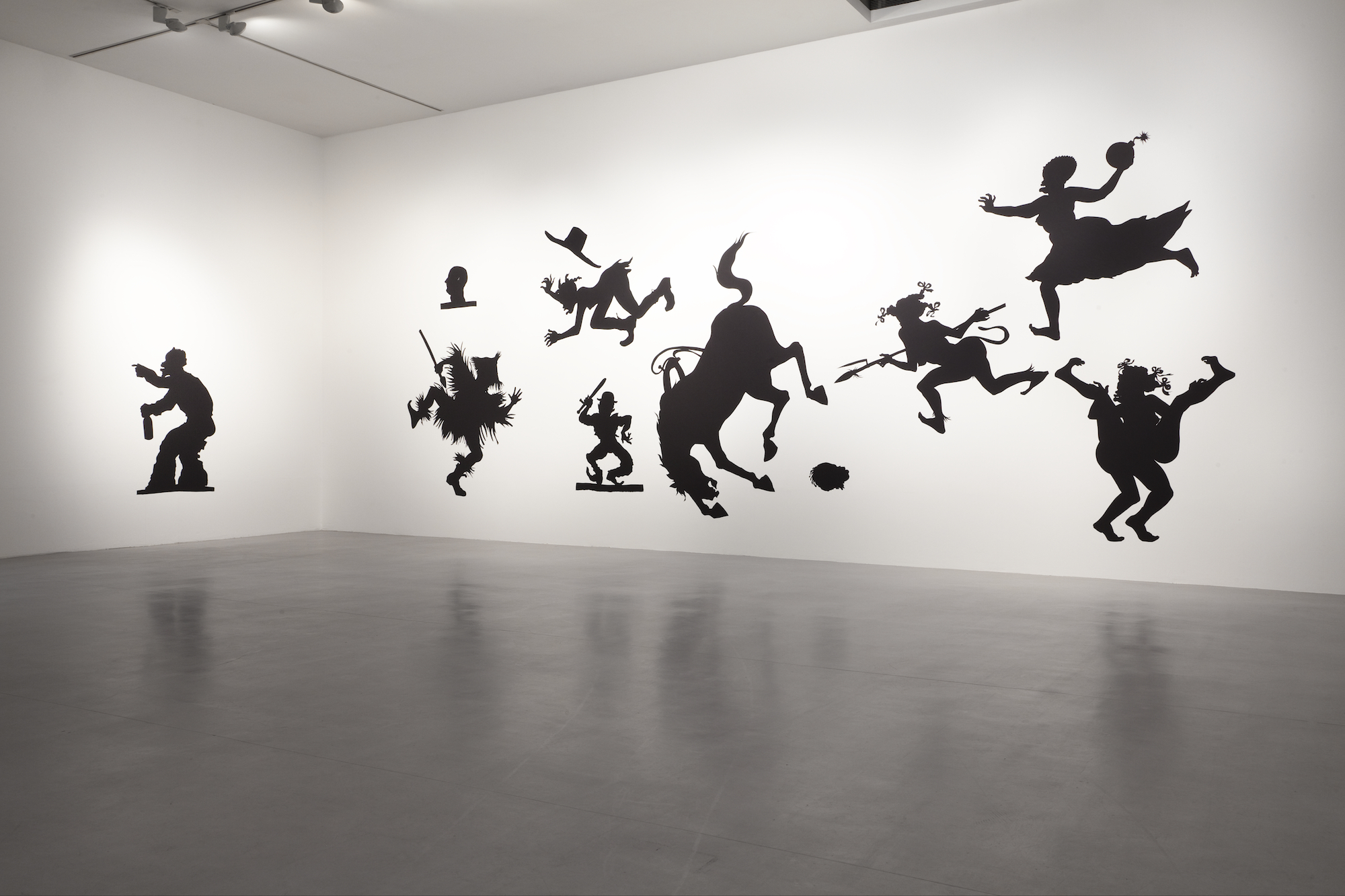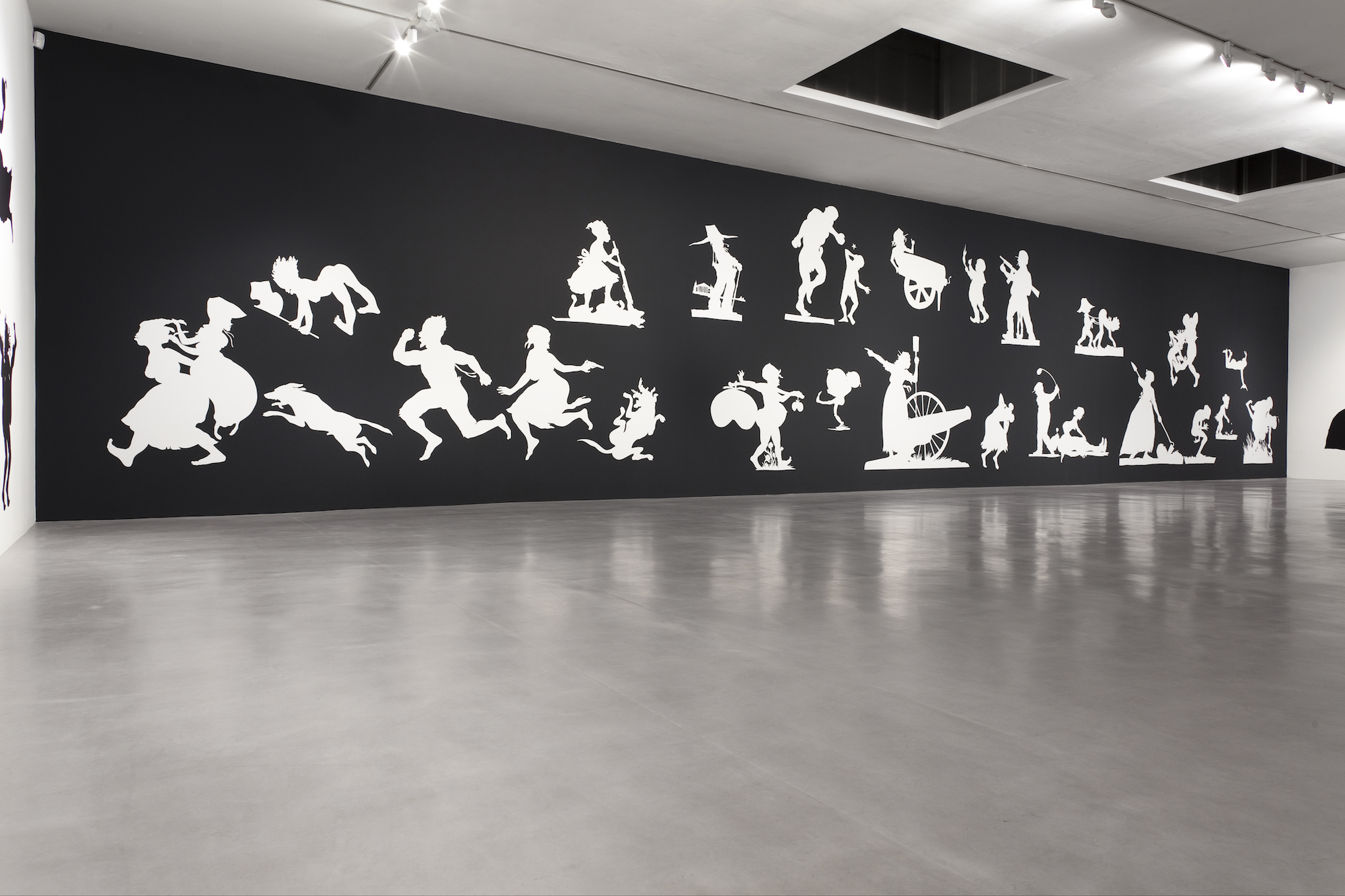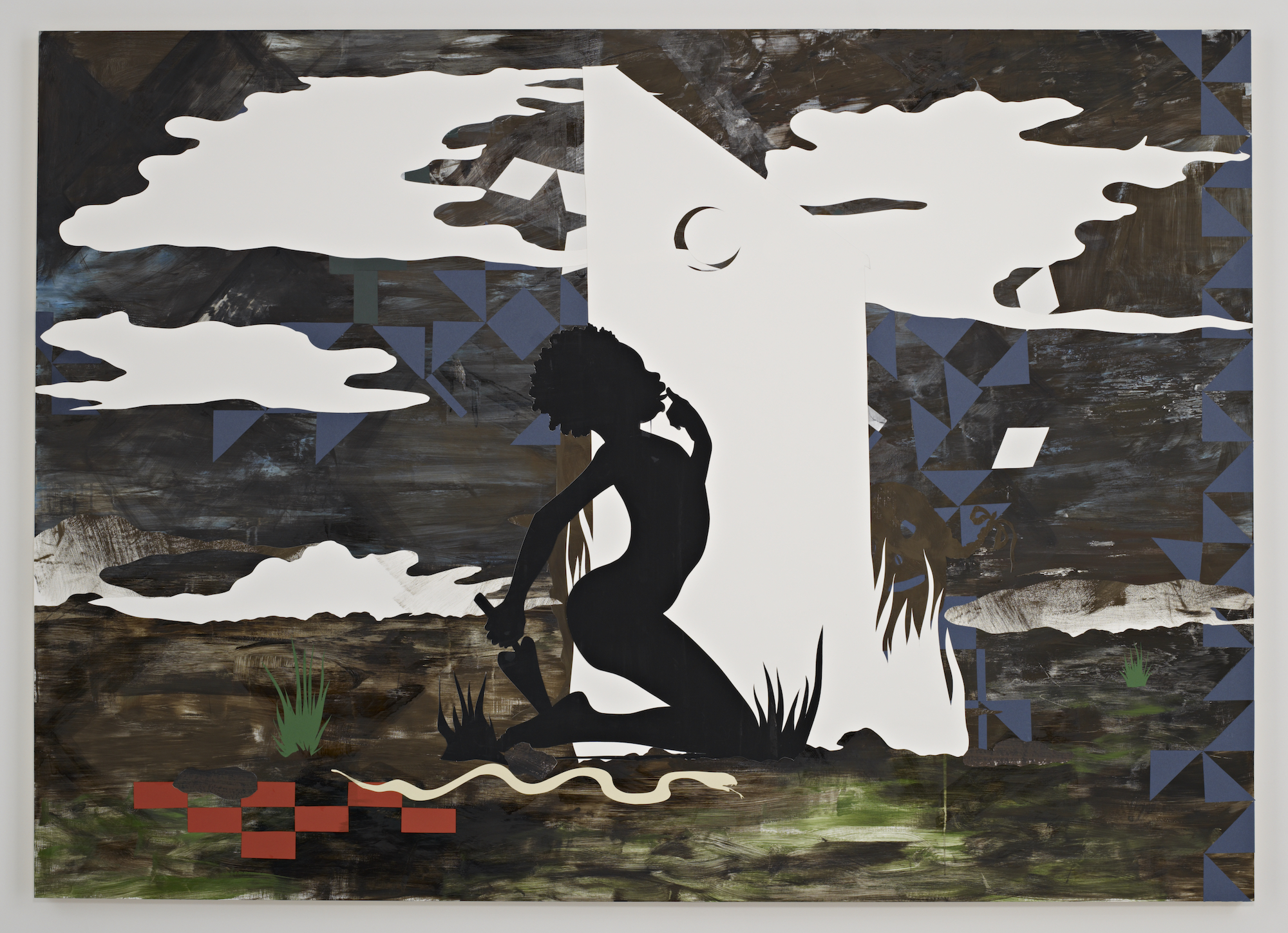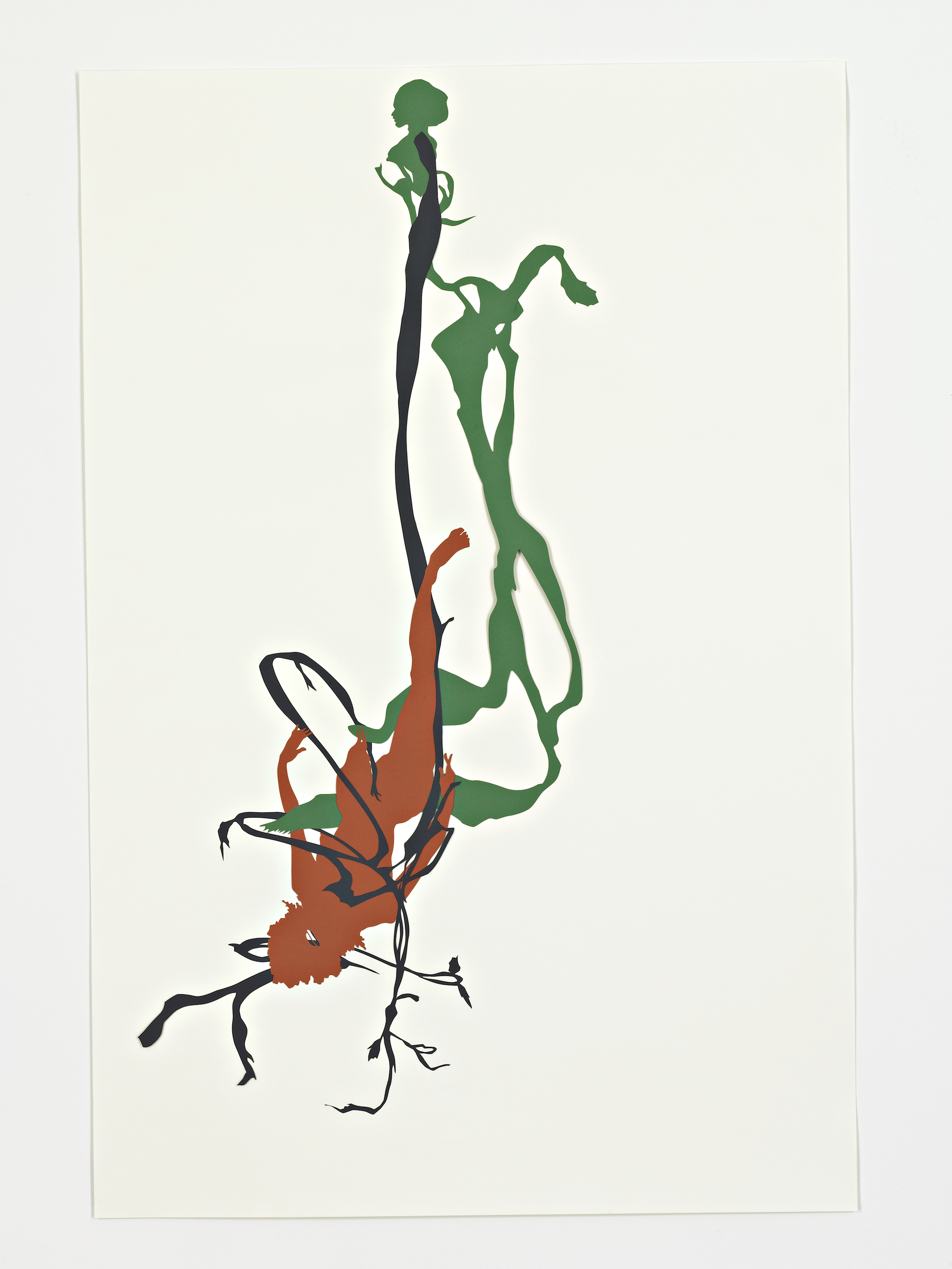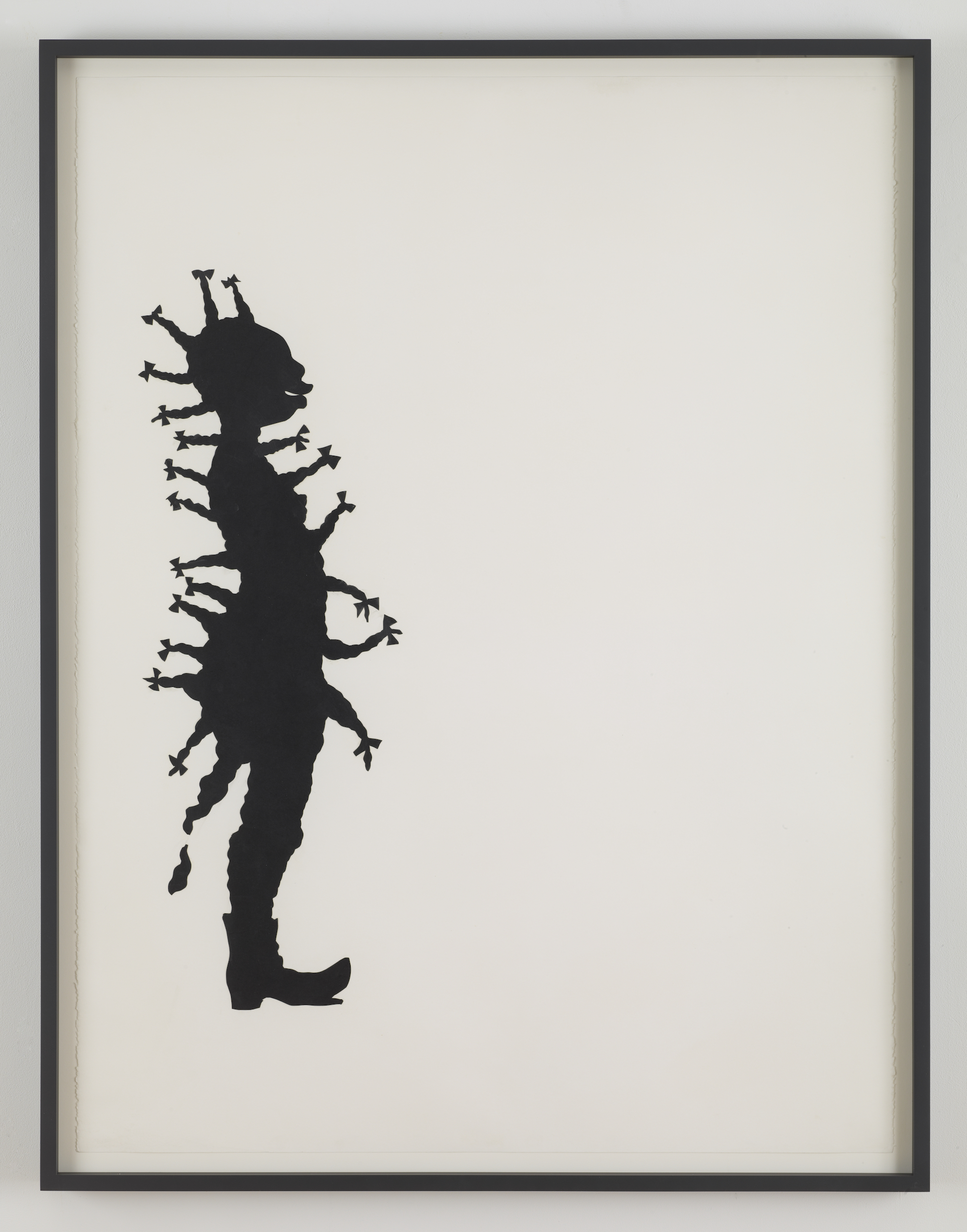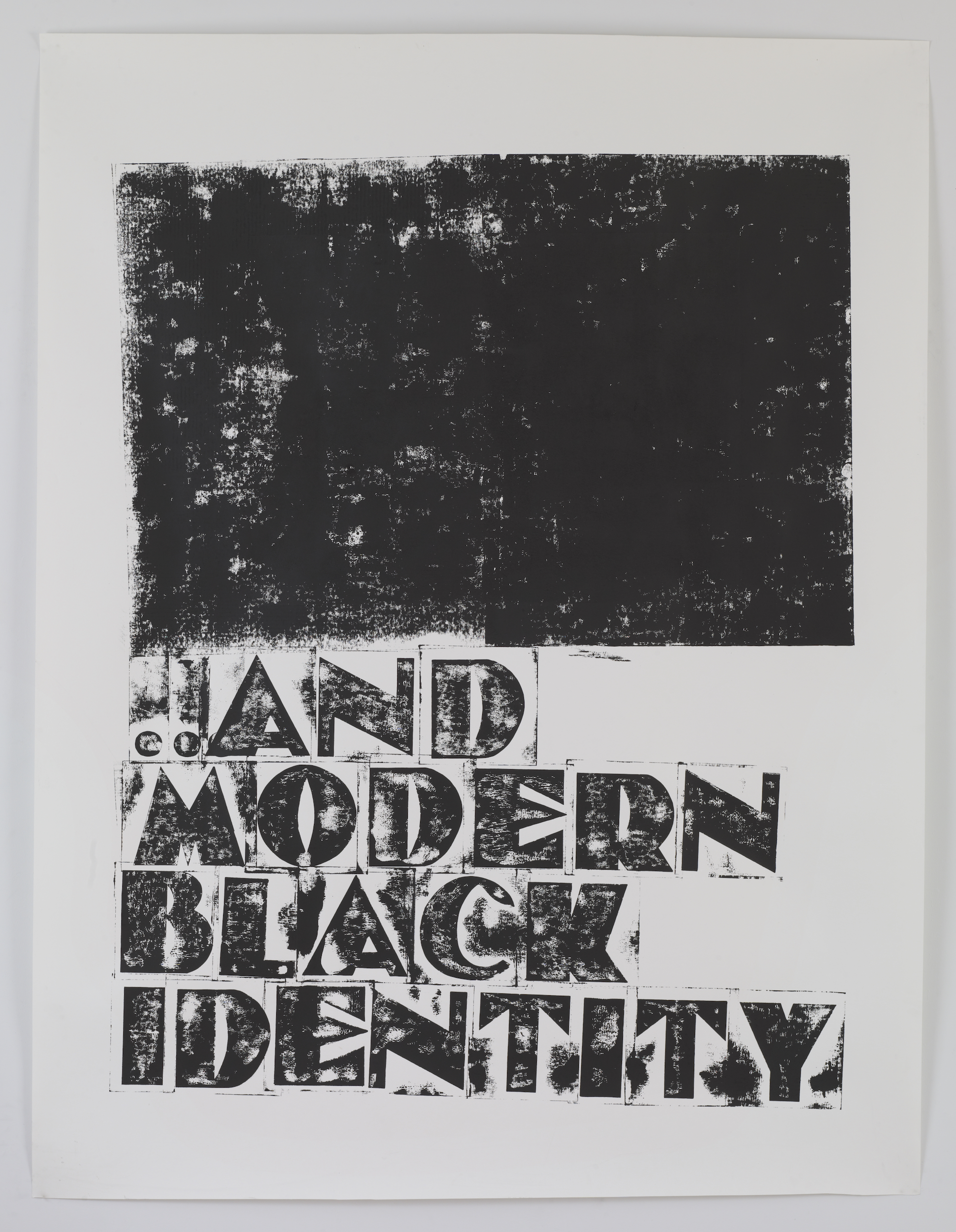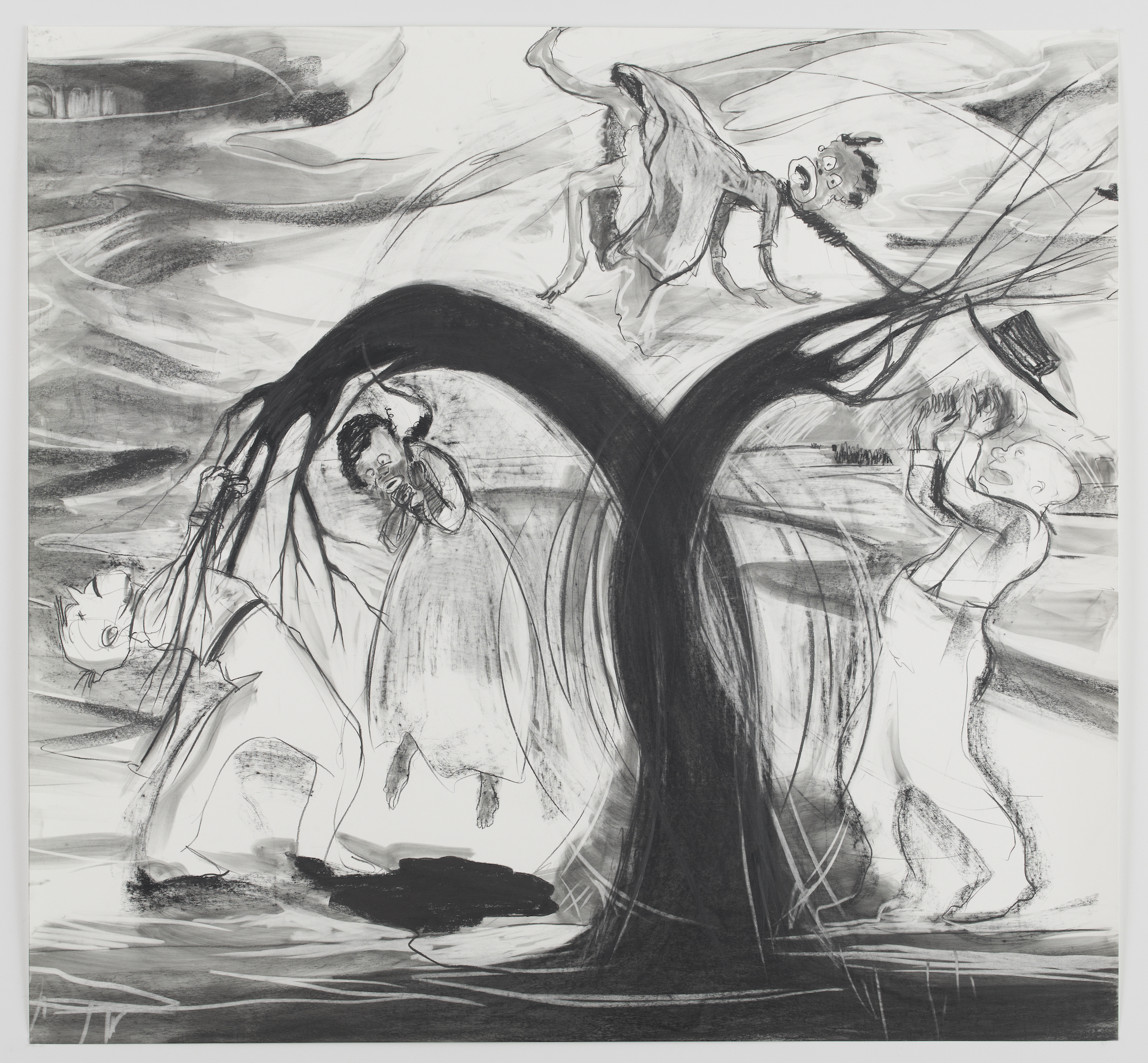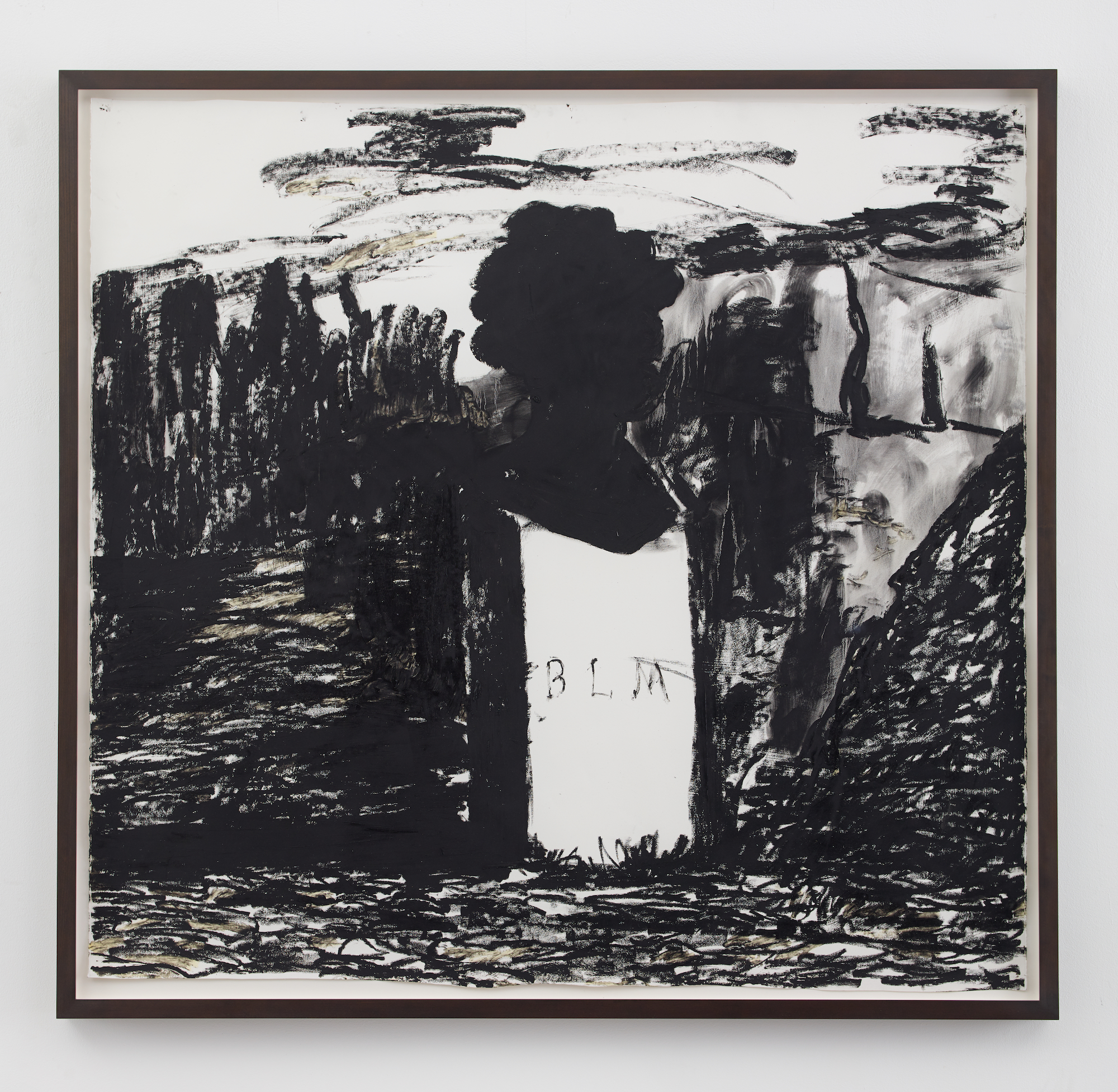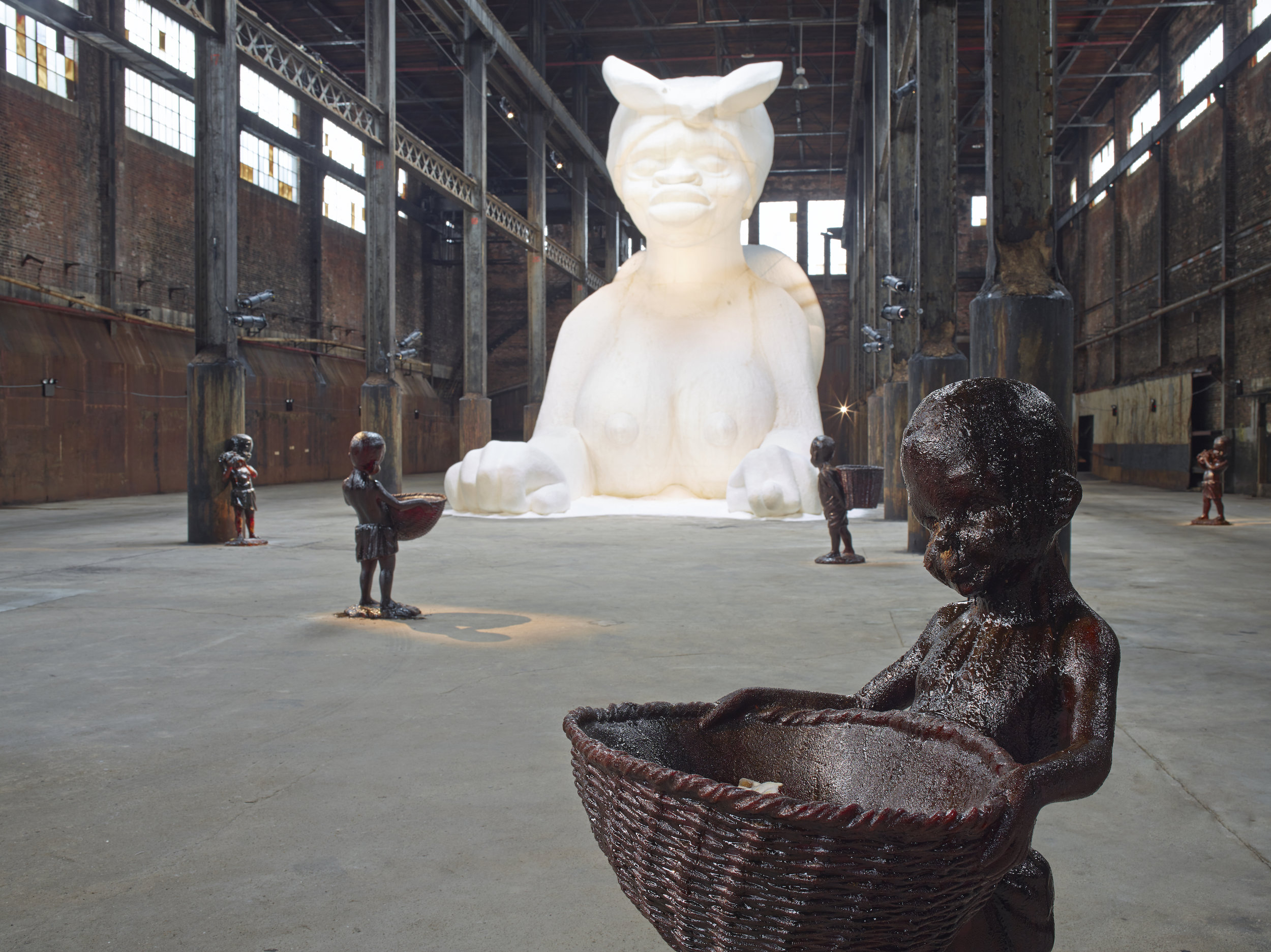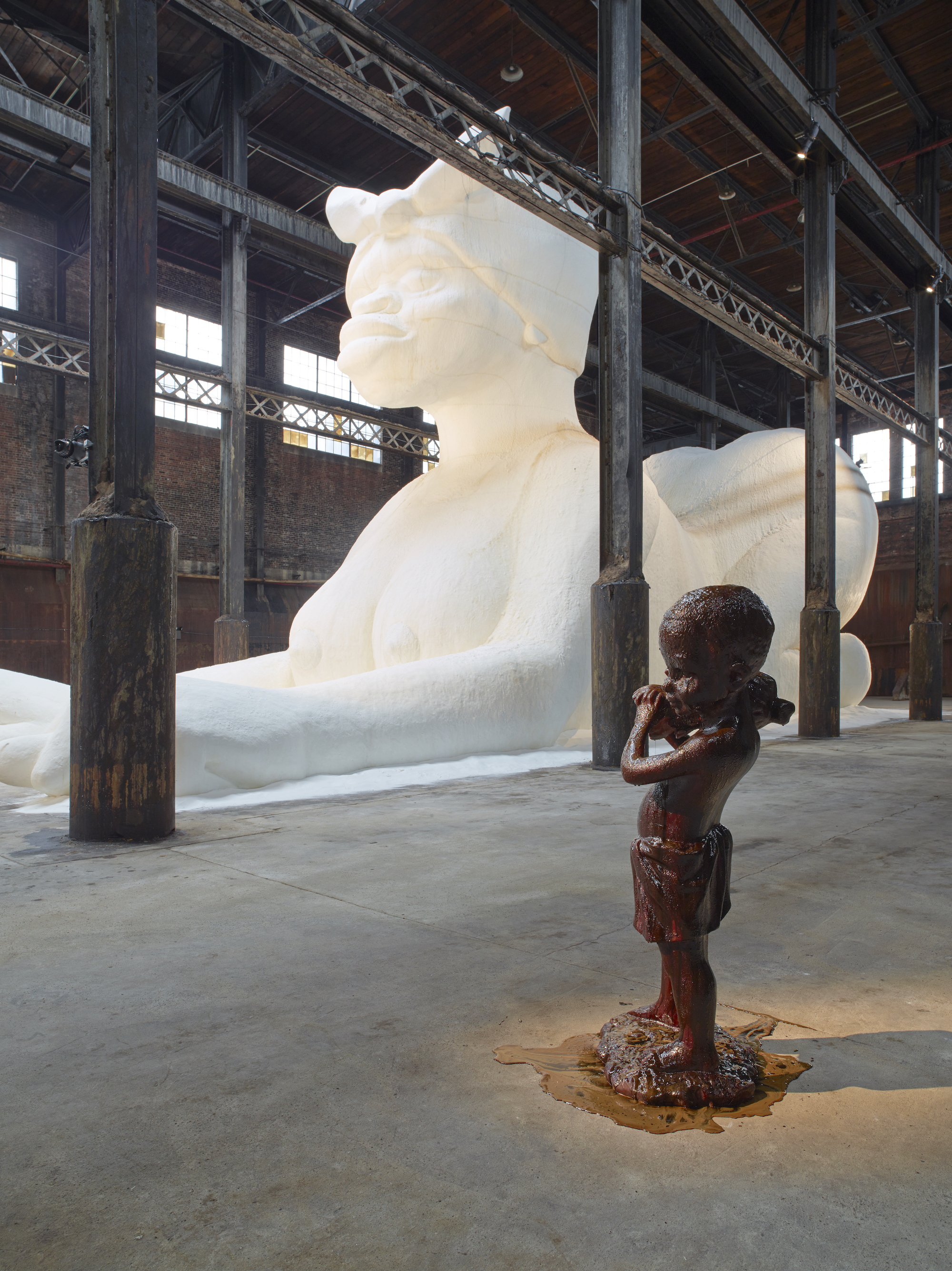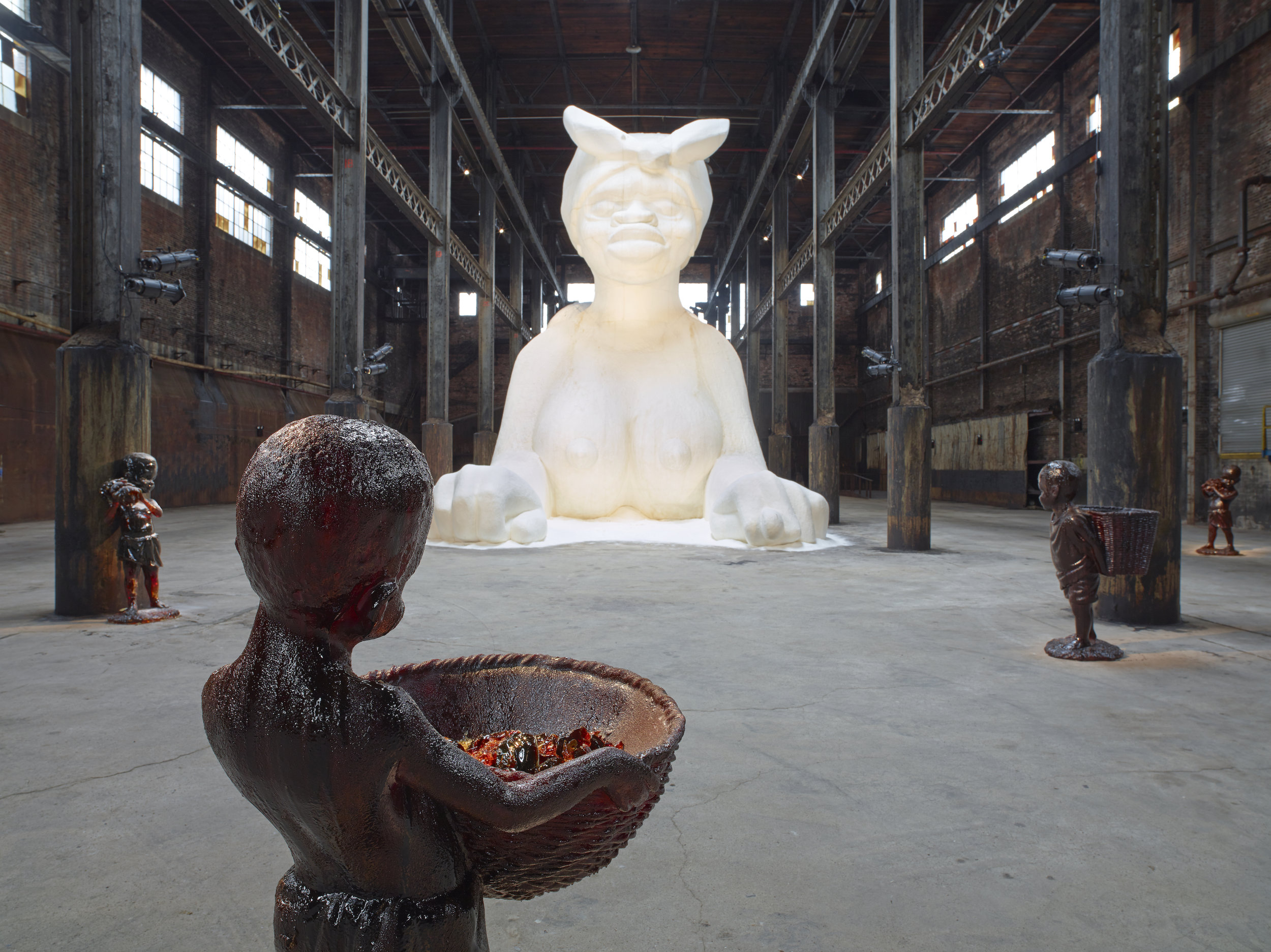Sugar: The Work of Kara Walker
by Cate Clother
“I didn’t want a completely passive viewer. Art means too much to me. To be able to articulate something visually is really an important thing. I wanted to make work where the viewer wouldn’t walk away; he would giggle nervously, get pulled into history, into fiction, into something totally demeaning and possibly very beautiful.” –Kara Walker
Kara Walker is an internationally renowned contemporary artist, revered for her work which endeavors to capture the emotional landscape of African American history and experience. With cut paper, film projection, sculpture and mixed media, Walker portrays controversial scenes from the broad spectrum of African American oppression. Walker’s imagery presents a shocking juxtaposition of graphic realism and nuanced fantastical elements which translate the experiences of racism, both the obvious and nuanced, into visual language.
Exploring the themes of race, violence, sexuality and gender, Walker draws her imagery chiefly from racist black caricatures which have maintained a ceaseless presence in American culture—from minstrel shows of the early 1800’s through children’s cartoons of the 1960’s. This nameless genre cast African Americans into one of several pre-made stereotypes, whose pervasiveness in theater, radio, television, film, animation and advertising deeply impacted the American imagination of race. The “jezebel” who tempted white men, the “buck” who preyed on white women, and the “picaninnie,” a child with bulging eyes and a wide red mouth, are a few of the caricatures which were used to humiliate and demean African Americans, to incite fear towards them, and to promote white supremacy in the years following emancipation. Walker depicts all of these caricatures in the stark contrast of black and white—distilling the complex experience of racism with the simplicity and veiled mystery of black paper silhouettes on a white background. Her panoramic vignettes appear whimsical at first glance, but upon inspection are gruesome and unbearable to take in.
Walker’s thematic content has recently culminated in a work of unprecedented scope and scale. In 2014, Walker stumbled upon New York’s Domino Sugar refinery, awaiting demolition. The abandoned sugar mill would become home to one of her most sweeping and grandiose creative gestures to date. The walls were coated with ancient molasses—dark, thick and sticky—the air smelled of burnt sugar. Walker found herself confronted with a relic of industry, built on the backs of the slave trade and African American experience that her work had been concerned with. To reconcile her response to such an environment, Walker turned it into a temple, a sacred space, to house A Subtlety—a sphinx-like sculpture made from 35 tons of sugar and sugar paste.
A Subtlety glows with otherworldly whiteness, offset by the blackened walls of coagulated molasses. The sphinx at the center of the piece has the head of a “mammy” or Aunt Jemima caricature, with broad lips and a kerchief over her hair, and an over-sexualized caricature of the black female body, with exaggerated breasts and buttocks. In this she represents both sex object and maternal caregiver, an object of lust and a mother’s helper. Surrounding the sphinx are dark sculptures of picanninie boys, carrying baskets full of bananas and sugar, paying homage to the sphinx and serving at her feet. Their faces are dusted with white powdered sugar, their appendages drip with molasses.
With this controversial piece, Kara Walker confronts the stereotype of the black female body, takes it for her own use, and elevates it to mythical proportions, traditionally reserved for a deity. The figure is at once vulnerable and god-like. Who is the slave, and who is the master? We are also faced with the history of sugar and its current place in society. Sugar is a commodity laced with a history of conquest, colonialism and slavery, once a precious and rare substance and now a ubiquitous plague on global society, bringing the decay of health and disease (diabetes, an epidemic which unequally impacts African American communities, has quadrupled in the last three decades). White sugar is also a symbol of purity- going through the refining process, it leaves behind the tar-like excrement of molasses and reaches the table immaculate, white. As the viewer, we are asked to consider all of these layers, and ultimately come to a place of release and cleansing, a purification of our own hearts and predetermined notions of race, gender, colonialism, and patriarchy.
“Sugar crystallizes something in our American Soul. It is emblematic of all industrial processes. And of the idea of becoming white. White being equated with pure, and true. It takes a lot of energy to turn brown things into white things. A lot of pressure.” –Kara Walker
Kara Walker, From: Sugar Makes This World, 2013-4. Ink, watercolor and graphite on paper, 11.75 x 8.25 inches.
Kara Walker’s work is regarded as one of the most affective expressions of the African American experience of the modern era. She is consistently concerned with power and oppression, whether through explicit or subtle means. She deftly intertwines the tragic with the poignant, beauty with taboo, attraction with repulsion, shame with the sacred. Her images resonate as uncomfortably familiar, and ask the viewer to step into the refiner’s fire—not to become white or purified, like refined sugar, but to be confronted by the prejudices and mythologies in ones own heart, to bring them into the light, and to watch them burn.
* All artworks ©Kara Walker. All images courtesy of Sikkema Jenkins & Co., New York.
Kara Walker
Born in Stockton, California in 1969, Walker was raised in Atlanta, Georgia from the age of 13. She studied at the Atlanta College of Art (BFA, 1991) and the Rhode Island School of Design (MFA, 1994). She is the recipient of many awards, notably the John D. and Catherine T. MacArthur Foundation Achievement Award in 1997 and the United States Artists, Eileen Harris Norton Fellowship in 2008. In 2012, Walker became a member of the American Academy of Arts and Letters. Her work can be found in museums and public collections throughout the United States and Europe including The Solomon R. Guggenheim Museum, New York; The Museum of Modern Art, New York; The Metropolitan Museum of Art, New York; The Tate Gallery, London; the Museo Nazionale delle Arti del XXI Secolo (MAXXI), Rome; and Deutsche Bank, Frankfurt.See more of Kara Walker's artwork at karawalkerstudio.com.




